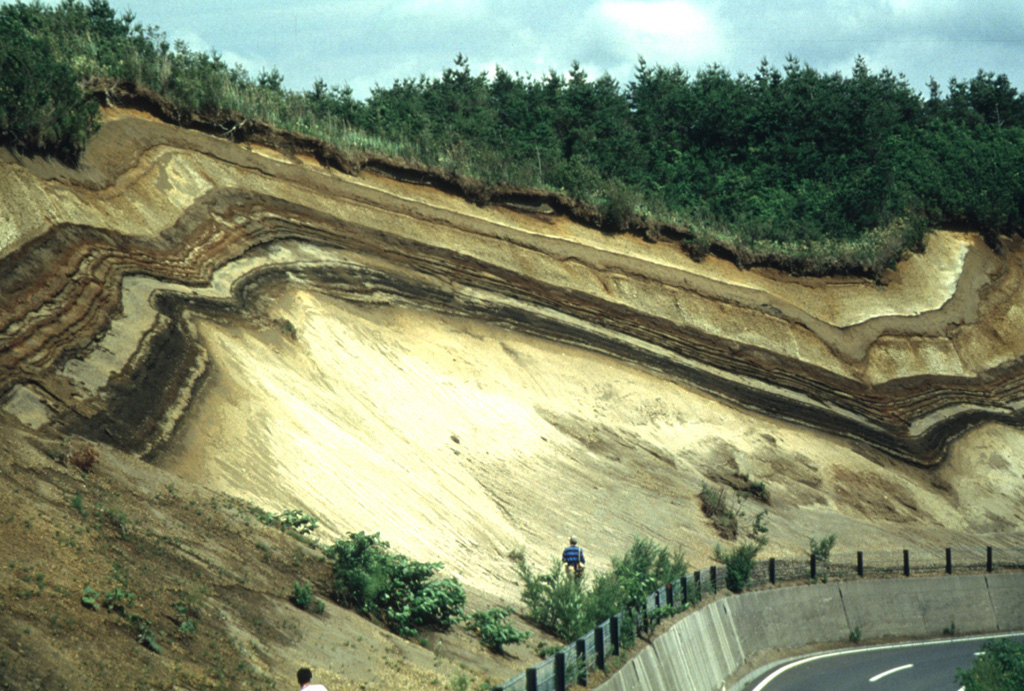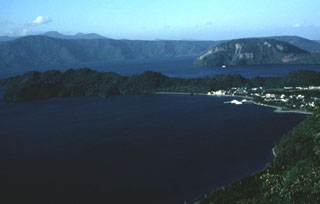Global Volcanism Program | Image GVP-06454

A roadcut west of the Ninokura dam exposes deposits from Towada. The thick light-colored unit at the base is the Hachinohe ignimbrite that formed about 13,000 years ago during the last of a series of explosive eruptions that resulted in the incremental formation of Towada's 11-km-wide caldera. The thinner light- and dark-colored deposits above the Hachinohe ignimbrite were produced by post-caldera eruptions, the most recent of which took place in 915 CE.
Photo by Yukio Hayakawa (Gunma University).
![]() This image is made available under the Creative Commons BY-NC 4.0 license terms.
This image is made available under the Creative Commons BY-NC 4.0 license terms.
Keywords: stratigraphy | geology | tephra | ignimbrite | outcrop | geology

Towada
